The English word “tipi” originated from the Lakota word “thipi”, which is defined as “a dwelling” primarily used by the nomadic tribes of the Great Plains of America for hundreds of years. These dwellings provided warmth and comfort in the winter and dryness during the rainy months. Tipis have evolved drastically over the years, but the overall concept hasn’t changed in comparison to today.
We feel it is important that we remember and respect the tipi’s heritage and how they have evolved during our design and development of the product Here, we look at the tipi’s history, where they were used and how they were constructed – as well as how they’ve changed for use in the modern world.
When and where were tipis originally used?
Research has shown evidence of tipi dwellings dating back as far as 10,000BC – that’s when sabre-toothed tigers and mammoths roamed the planet! Archaeologists unearthed a series of wooden poles taken from what is assumed to be a village of tipis. Tipis, teepees or thipis were a popular choice of temporary home for wandering tribes throughout the world, but the most iconic depiction of a tipi is of the Native Americans – the Plains Indians in particular – and their “wigwams”. Even The Adventures of Tin Tin took him to meet the Blackfeet Plains Indians Tribe with their tipis!
It was important that the tipi could be easily taken down, moved and rebuilt on a regular basis to reflect the nomadic lifestyle of following herds of migrating buffalo to hunt and survive. When the tribe arrived at a new location, the woman of each family would set up and build the tipi. Building the teepee was very efficient and typically only took around 30 minutes to set up.
In the summer, the covering would be raised to allow for a large gap at the bottom, which enabled cool air to flow through the tipi and keep the inside cooled. While in the winter, additional coverings and insulation such as grass and animal hides were used to keep the interior of the tipi warm. In the centre, a fire would be built. There was a hole at the top to let out the smoke out.
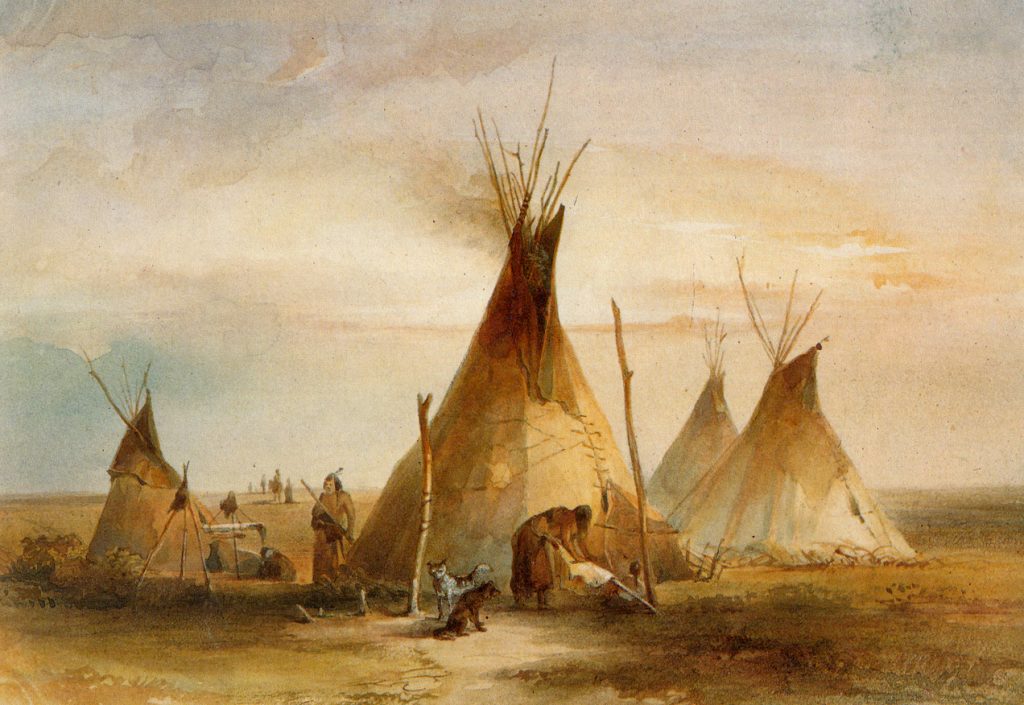
How were the tipis constructed?
Dakota Teachings
“The floor of the tipi represents the earth on which we live, the walls represent the sky and the poles represent the trailers that extend from the earth to the spirit world.”
A typical family tipi is a conical, portable structure that has two adjustable smoke flaps at the top. The frame consists of 13 poles, from 12-25ft in length, which after being tied together near the top, are raised upright with a twist so as to cross the poles above the fastening. The base of the poles are then adjusted into a circular base around 10ft in diameter – so a lot smaller than our Big Hats! These “main poles” were secured in the same way ours are, with long pins. An adjustment in the framework was made to accommodate the strong winds of the region.
A variety of coverings were used, depending on the location and traditions of the tribe but a selection of untanned and tanned buffalo skins stitched together was the most popular choice to be lashed together on the outside.
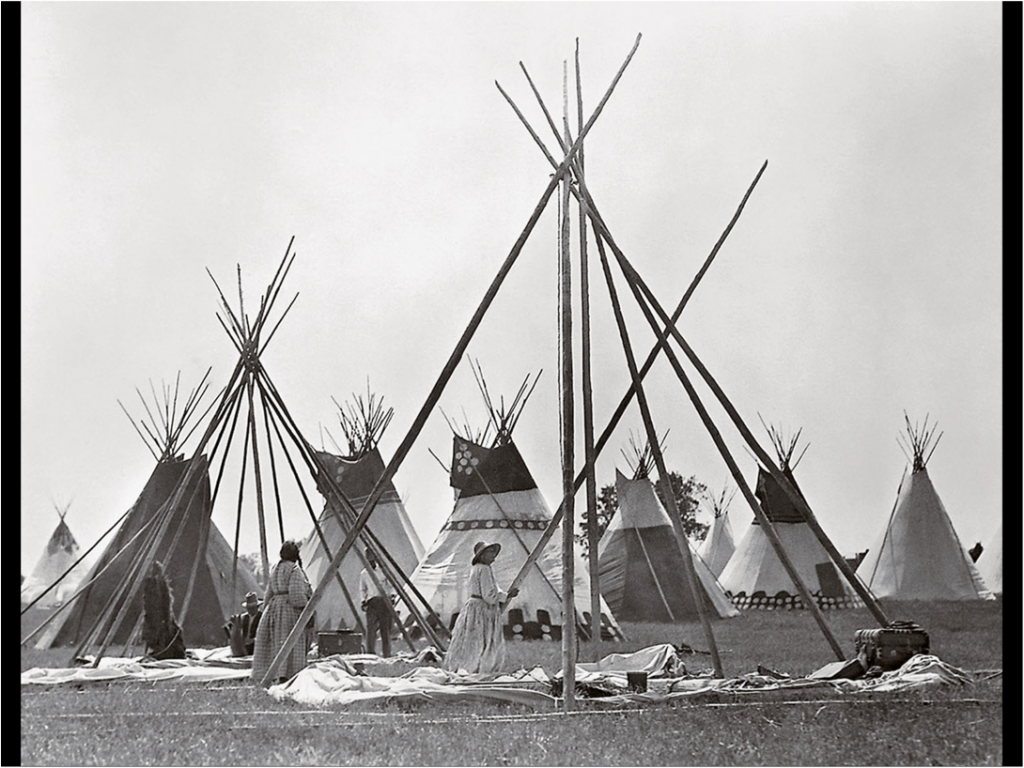
What was life like inside a tipi?
The Plains Indians had a deep appreciation for the tipi. Secure, mobile and comfortable, it was looked upon by these nomadic hunters as “a good mother” who sheltered and protected her children. Normally one family would live in one tipi, but in some tribes, men and women were segregated into their own gender centric tipi areas.
A typical tipi had a hide bedding, rug for the baby, willow-rod backrests, cradle, a suspended cooking bag (over the central fire), a supply of fuel and bags containing feed, medicine and other necessities. On the insulating lining of the tipi were hung sacred objects, weapons, shields and other items. This lining was often painted with brilliantly coloured designs that recalled past events in the lives of those who inhabited the tipi.
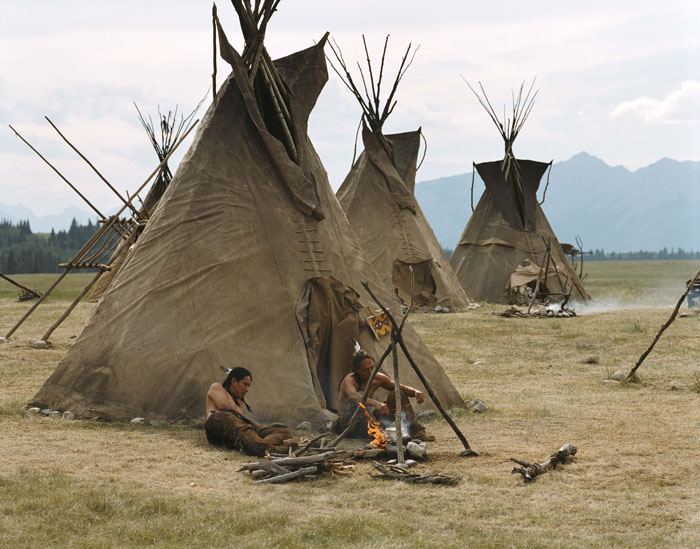
Bringing Tipi Design into the 21st Century
Today, our tipis are relatively unchanged from their ancestral beginnings. However, the latest materials and techniques have enhanced the quality in line with modern-day methods. The design of our tipis will not only provide protection to the user inside the tipi but is actually resistant to most weather conditions making it the perfect structure for both winter and summer events. The materials we use are also flame retardant which means that we allow fires inside to keep you warm.
When designing the first of our tipis, all those years ago, we felt it important to retain the shape and style of the original “thipi” design. We used the latest materials and techniques to enhance the ability of the basic tipi, making it larger, interlinking and a durable structure that can be used time and time again.
Key changes we have made to bring the tipi design into the 21st Century include:
Central Crown – instead of lashing together the tops of our Main Poles with rope, we designed an innovative Central Crown out of metal, where all of the Main Poles located onto with metal pins. This creates an incredibly strong central heart to the framework, keeping it in position at all times with no chance of slackening.

Purlin beams – to increase the strength of the framework in high winds, we have added horizontal beams halfway up the structure that fix onto the Main Poles with metal clips and pins. It is these Purlin Beams where our Link Kits and Accessories locate onto.
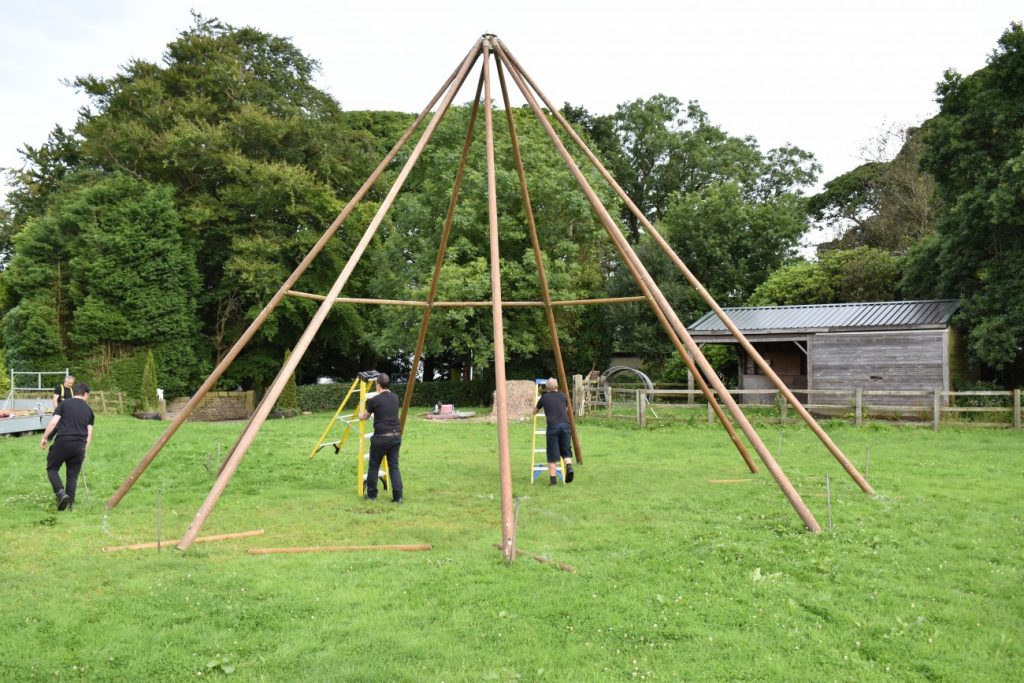
Linking ability – to create an outdoor event space for hundreds of guests, our tipis have the ability to link together with our unique Link Kits which come complete with poles and canvas to create a seamless finish both internally and externally.
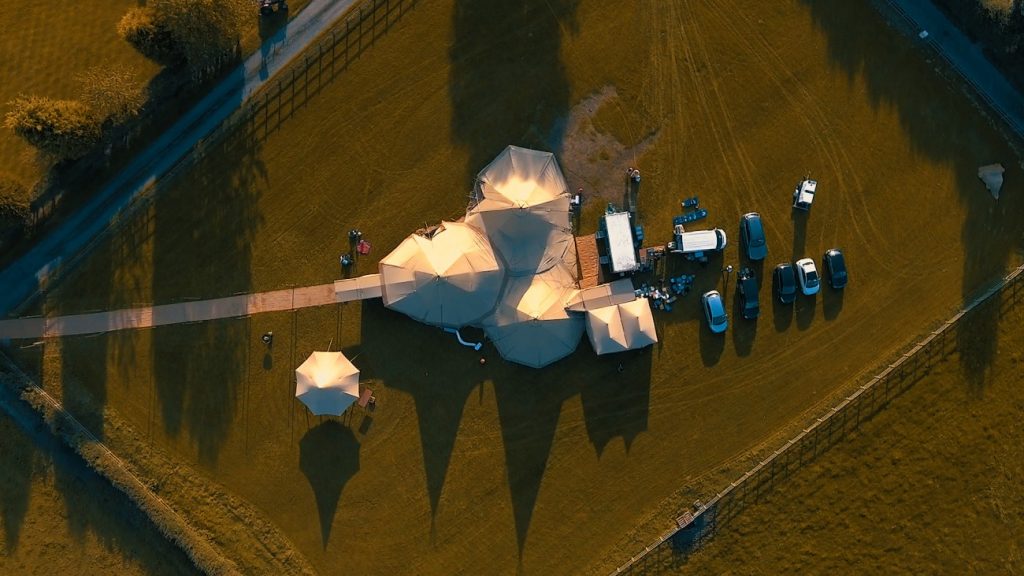
Covering upgrade – instead of cow and buffalo hides, we use professional standard, durable outdoor fabric for all our tipis which is the best you can source on the market. It is highly waterproof, weather-resistant, moisture regulating and breathable – making it perfect during the heat of the summer and the cold of the winter. It is also sun-protective and colourfast. It is a blend of cotton and synthetic fibre, which is much more durable than cheap cotton fabric, while the beige colour allows the lighting inside to glow warmly through. The canvas is also flame retardant as standard and meets BS 7837, which makes it a very safe product, especially when a fire pit is lit inside.
For more information on what our selection of tipis has to offer, visit our website or contact us today on 01204860738 or info@thetipicompany.com. Alternatively, we welcome you to visit our showroom at our HQ in Bolton, Lancashire. To do this, please contact a member of our sales team to arrange your 1-2-1 appointment and guided tour.

